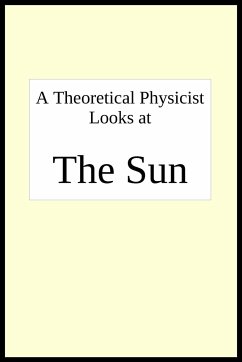AMDG This book lays the foundation for a science, as opposed to technology, of the sun. After an introduction explaining how science, in the strict sense, differs from technology, it examines several topics from both perspectives. As a first topic the book considers the orbit of the earth around the sun. Technology, after centuries of elaboration, calculates a fixed orbit. Science, on the contrary, easily concludes that the earth traces out many different orbits. Technology has its uses; science has its truth. Next the perihelion of Mercury is considered. Here Technology is seen as constructing mathematical models of dubious utility while serving to stimulate theatrical cosmological imaginations. Science focuses on unexplained forces which need to be investigated. Of the sun itself science addresses a topic which evades contemporary technology: What is the definition of the sun? Without definition, do we know what we are talking about? Next comes the center of the sun. Technology answers by assuming various mathematical shapes, all of which are approximations to the sun's actual shape. Science, in contrast, considers many different kinds of centers among which are: material and local, of symmetry, centroids, centers of relative density. Science shows how these latter are related to gradients. These many centers may be considered for the sun as a whole, or also for smaller sections. Thus a large prospect for analysis appears open for investigation. The surface of the sun comes next. Science has much to say about surfaces, while technology mostly stumbles on defining the sun's surface. As a primary observable the sun's surface needs close attention. The color of the sun is also immediately observable. Technologists use its color to determine the sun's surface temperature by using a mathematical equation called a "black body." Science objects noting that any painter can change a body's spectrum without altering its temperature. Contrariwise, bodies at different temperatures can exhibit an identical spectrum. After examining the black body thesis, the book explores an alternative which does not use Planck's Law. Temperature is seen as related to pressure in a scientific explanation of line and continuous spectra. The insight calls into question contemporary "black body" explanations and thus the accepted values of the sun's surface temperature. Each section concludes with a list of suggested tasks solar physicists may undertake to further a science of the sun.
Hinweis: Dieser Artikel kann nur an eine deutsche Lieferadresse ausgeliefert werden.
Hinweis: Dieser Artikel kann nur an eine deutsche Lieferadresse ausgeliefert werden.








